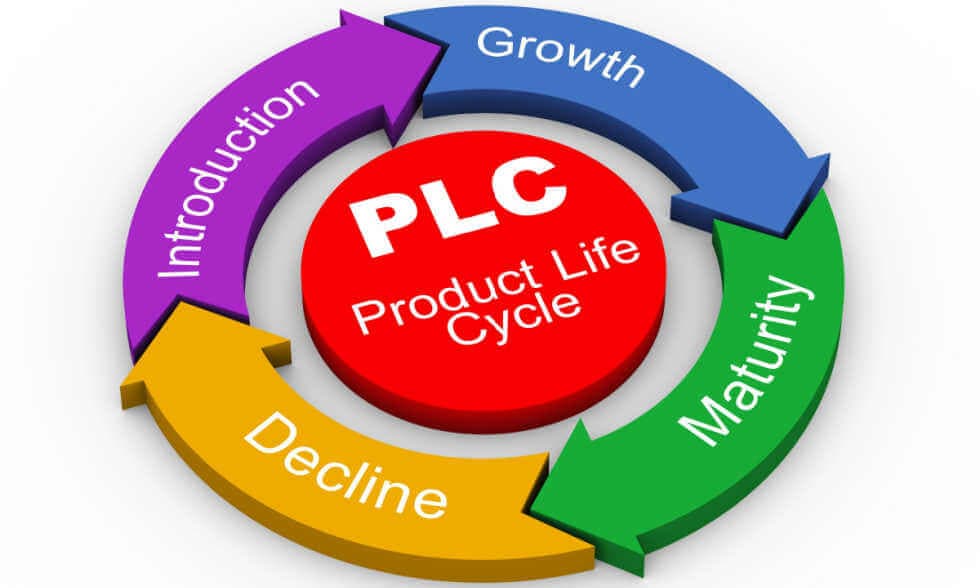
Image Credit: PLC Image cycle
In the dynamic world of product management, the journey from conception to market impact is an intricate dance between innovation and adaptation. Understanding and effectively navigating the product life cycle is paramount to ensuring sustained success in today's competitive landscape. In this comprehensive guide, we will delve deeply into the nuances of each stage of the product life cycle, exploring strategies, challenges, and real-world examples to illuminate the path from idea to impact.
Understanding the Product Life Cycle:
Every product undergoes a journey known as the product life cycle, encompassing four distinct stages: Introduction, Growth, Maturity, and Decline. Each stage presents unique challenges and opportunities that require strategic foresight and agility to navigate effectively.
Introduction:
The Introduction stage marks the birth of a product, where it is introduced to the market for the first time. Sales are typically low as awareness of the product spreads among consumers. Key objectives during this phase include building brand awareness, defining the target market, and establishing a foothold in the industry. Early adopters play a crucial role in providing feedback and validation for the product concept.
Example: Airbnb's Disruptive Entry into the Hospitality Industry
When Airbnb launched in 2008, it introduced a revolutionary concept of peer-to-peer lodging accommodations. Despite initial skepticism, early adopters were drawn to the platform's unique value proposition of affordable, authentic travel experiences. Through strategic marketing initiatives and user-generated content, Airbnb quickly gained traction and disrupted the traditional hospitality industry.
Growth:
In the Growth stage, the product experiences rapid adoption and increasing sales as it gains momentum in the market. Customer demand surges, driving revenue growth and market expansion. Key strategies during this phase include scaling operations, enhancing product features, and expanding distribution channels to capitalize on growing demand.
Example: Zoom's Explosive Growth During the COVID-19 Pandemic
Amid the global pandemic, Zoom emerged as a dominant force in the video conferencing market. With remote work and virtual communication becoming the new norm, Zoom experienced unprecedented growth in users and revenue. The company rapidly scaled its infrastructure to meet surging demand, while also introducing new features and integrations to enhance user experience.
Maturity:
The Maturity stage signifies a period of relative stability in sales growth, as the product reaches widespread acceptance in the market. Competition intensifies, and market saturation becomes a concern as growth opportunities plateau. To maintain market share and profitability during this phase, companies must focus on differentiating their product through innovation, quality improvements, and targeted marketing efforts.
Example: Coca-Cola's Sustained Success in the Beverage Industry
Coca-Cola, a global leader in the beverage industry, has successfully navigated the Maturity stage of its flagship product, Coca-Cola Classic. Despite facing intense competition and shifting consumer preferences, Coca-Cola has maintained its market dominance through continuous product innovation, strategic branding initiatives, and diversification into new product categories and markets.
Decline:
Inevitably, every product enters the Decline stage as sales begin to decline due to changing consumer preferences, technological advancements, or market saturation. While this phase may signal the end of the product's life cycle, it also presents opportunities for strategic decision-making, such as product diversification, market repositioning, or orderly discontinuation.
Example: Blockbuster's Fall from Grace in the Age of Digital Streaming
Once a household name in the entertainment industry, Blockbuster failed to adapt to the rise of digital streaming services such as Netflix. As consumers shifted towards online streaming and on-demand content, Blockbuster's brick-and-mortar rental model became obsolete. Despite attempts to compete with digital platforms, Blockbuster ultimately filed for bankruptcy, highlighting the importance of agility and innovation in a rapidly evolving market.
Navigating Challenges Throughout the Product Life Cycle:
Despite careful planning, product management is fraught with challenges at every stage of the life cycle. Here are some common hurdles and strategies to overcome them:
Market Uncertainty:
Fluctuations in consumer preferences, economic conditions, and technological advancements can disrupt product strategies. Stay agile and adaptable, continuously monitoring market dynamics and pivoting when necessary. Conduct market research, gather customer feedback, and leverage data analytics to anticipate trends and stay ahead of the curve.
Example: Spotify's Evolution in the Music Streaming Industry
When Spotify entered the music streaming market, it faced uncertainty regarding consumer willingness to pay for subscription-based services. Through iterative product development and strategic partnerships with record labels and artists, Spotify successfully navigated market uncertainties and emerged as a leading player in the music streaming industry.
Competition:
Rival products pose a significant threat to market share and profitability, necessitating continuous innovation and differentiation. Conduct thorough competitive analysis to identify strengths, weaknesses, opportunities, and threats. Differentiate your product through superior quality, innovative features, and compelling value propositions that resonate with your target audience.
Example: Nike's Competitive Advantage in the Athletic Footwear Market
Nike, a global leader in athletic footwear and apparel, maintains its competitive edge through relentless innovation and brand differentiation. By leveraging advanced technology, collaborating with world-class athletes, and investing in marketing campaigns that inspire and empower consumers, Nike consistently outpaces competitors and maintains its position as an industry leader.
Resource Constraints:
Limited resources, whether financial, human, or time-related, can constrain product development and marketing efforts. Prioritize initiatives that yield the highest return on investment (ROI) and allocate resources effectively. Foster cross-functional collaboration to leverage diverse skill sets and optimize resource allocation. Explore alternative funding sources such as crowdfunding or strategic partnerships to supplement internal resources.
Example: Kickstarter's Crowdfunding Platform Empowering Product Innovation
Kickstarter revolutionized product development by providing a crowdfunding platform where entrepreneurs can raise capital and validate product ideas directly from consumers. By democratizing access to funding and enabling direct engagement with backers, Kickstarter empowers innovators to overcome resource constraints and bring their creative visions to life.
Customer Feedback:
Customer feedback is invaluable for product improvement and customer satisfaction, but managing it effectively can be challenging. Implement robust feedback mechanisms across multiple channels, including surveys, social media, and customer support channels. Prioritize actionable insights that align with strategic objectives and address pain points or areas for improvement. Engage with customers proactively, acknowledge their feedback, and communicate how their input contributes to product enhancements.
Example: Amazon's Customer-Centric Approach Driving Continuous Improvement
Amazon, a pioneer in e-commerce and technology, places a strong emphasis on customer feedback and satisfaction. Through features such as customer reviews, ratings, and recommendations, Amazon gathers valuable insights to improve product selection, pricing, and customer service. By listening to customer feedback and incorporating it into decision-making processes, Amazon maintains a customer-centric culture focused on driving continuous improvement and innovation.
Conclusion:
Successfully navigating the product life cycle requires a combination of foresight, agility, and strategic decision-making. By understanding the distinct stages of the life cycle and implementing tailored strategies, product managers can steer their products towards sustained growth and impact in the market. Embrace the journey from idea to impact, and empower your product to thrive amidst ever-evolving market dynamics.
